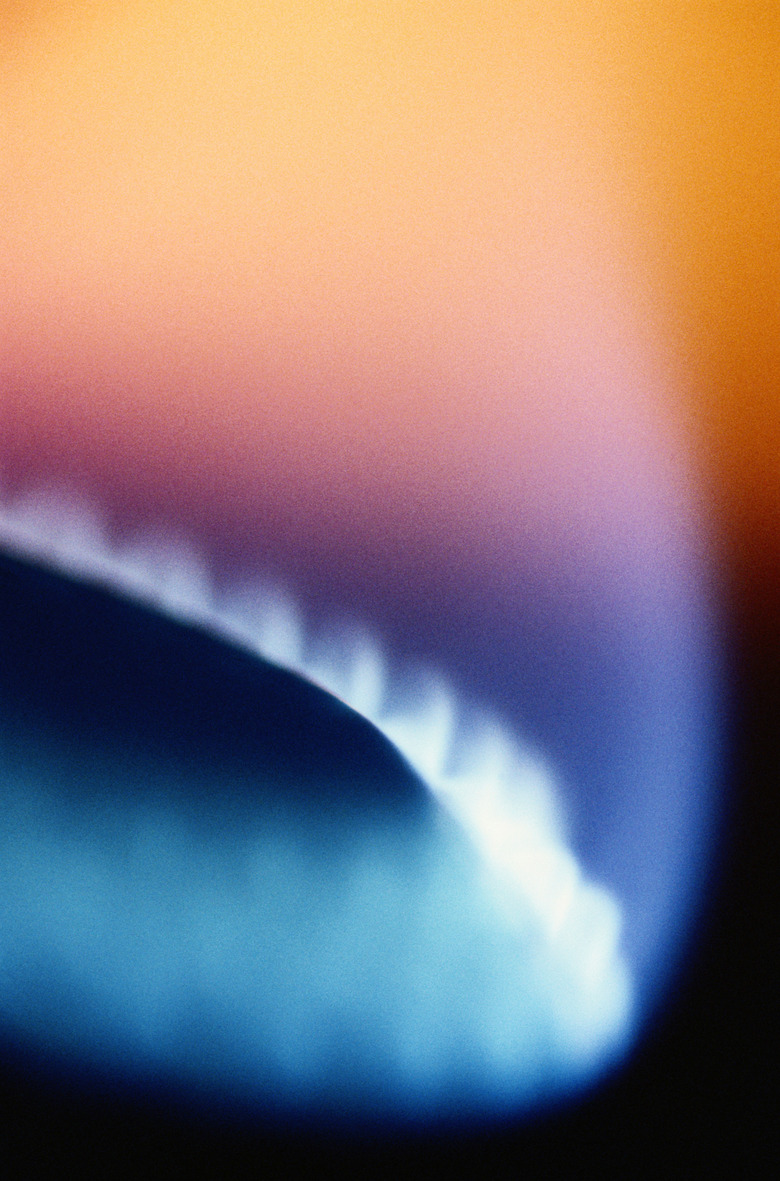How Does An Atomic Absorption Spectrometer Work?
Atomic absorption (AA) is a scientific testing method used for detecting metals in solution. The sample is fragmented into very small drops (atomized). It is then fed into a flame. Isolated metal atoms interact with radiation that has been pre-set to certain wavelengths. This interaction is measured and interpreted. Atomic absorption exploits different radiation wavelengths absorbed by different atoms. The instrument is most reliable when a simple line relates absorption-concentration. Atomizer/flame and monochromator instruments are key to making the AA device work. Relevant variables of AA include flame calibration and unique metal-based interactions.
Discrete Absorption Lines
Discrete Absorption Lines
Quantum mechanics states that radiation is absorbed and emitted by atoms in set units (quanta). Each element absorbs different wavelengths. Let's say two elements (A and B) are of interest. Element A absorbs at 450 nm, B at 470 nm. Radiation from 400 nm to 500 nm would cover all elements' absorption lines.
Assume the spectrometer detects a slight absence of 470 nm radiation and no absence at 450 nm (all of the original 450-nm radiation gets to detectors). The sample would have a correspondingly small concentration for element B and no concentration (or "below detection limit") for element A.
Concentration-Absorption Linearity
Concentration-Absorption Linearity
Linearity varies with the element. At the lower end, linear behavior is limited by substantial "noise" in the data. This happens because very low metal concentrations reach instrument detection limit. At the higher end, linearity breaks down if element concentration is high enough for more complicated radiation-atom interaction. Ionized (charged) atoms and molecule formation work to give a nonlinear absorption-concentration curve.
Atomizer and Flame
Atomizer and Flame
The atomizer and flame convert metal-based molecules and complexes into isolated atoms. The multiple molecules that any metal could form means that matching a particular spectrum to the source metal is difficult, if not impossible. The flame and atomizer are intended to break any molecular bonds they might have.
Fine-tuning flame characteristics (fuel/air ratio, flame width, choice of fuel, etc.) and atomizer instrumentation can be a challenge in itself.
Monochromator
Monochromator
Light enters the monochromator after passing through the sample. The monochromator separates light waves according to wavelength. The purpose of this separation is to sort out which wavelengths are present and to what extent. Received wavelength intensity is measured against the original intensity. The wavelengths are compared to determine how much of each relevant wavelength was absorbed by the sample. The monochromator relies on precise geometry to work correctly. Strong vibrations or sudden temperature swings may cause a monochromator to break.
Relevant Variables
Relevant Variables
Special optical and chemical properties of the elements being studied are important. For instance, concern could focus on traces of radioactive metal atoms, or tendency to form compounds and anions (negatively charged atoms). Both of those factors can give misleading results. Flame properties are also very important. These characteristics include flame temperature, flame-line angle relative to the detector, gas flow rate and consistent atomizer function.
Cite This Article
MLA
Aberdeen, Stan. "How Does An Atomic Absorption Spectrometer Work?" sciencing.com, https://www.sciencing.com/atomic-absorption-spectrometer-work-6326899/. 24 April 2017.
APA
Aberdeen, Stan. (2017, April 24). How Does An Atomic Absorption Spectrometer Work?. sciencing.com. Retrieved from https://www.sciencing.com/atomic-absorption-spectrometer-work-6326899/
Chicago
Aberdeen, Stan. How Does An Atomic Absorption Spectrometer Work? last modified March 24, 2022. https://www.sciencing.com/atomic-absorption-spectrometer-work-6326899/
